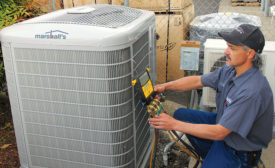Home » variable-speed technology
Articles Tagged with ''variable-speed technology''
2017 AHR Expo — Education Classes
2017 AHR Expo — New Product
Armstrong Fluid Technology: Vertical-In-Line Pump Retrofit
January 2, 2017
Variable-speed Equipment Provides Constant Comfort Benefits
Enhanced comfort, dehumidification, and energy savings await
Read More
Motors and Drives: Brains to Match Their Brawn
When an HVAC system is ‘humming along,’ that smooth hum is often courtesy of a motor or drive
Read More
Frost & Sullivan Recognizes Armstrong with Product Strategy Leadership Award
Design Envelope products deliver maximum value with low operating risk and costs
October 5, 2016
Variable-speed Features Enhance Geothermal Performance
Strides in speed-control technologies improve comfort and efficiency
Read More
2016 AHR Expo – New Product
Carel: High-Efficiency Refrigerated Case Control System
January 26, 2016
New Motor Products Propel the Market Forward
Manufacturers share their latest and greatest HVAC motor-related offerings
Read More
Heat Pump Popularity Built on Versatility, Reliability
Sales Still Climbing Around the Country
Read More
Shifting Standards Impacting Compressors
Trends in Efficiency, Environmental Regulations Influencing OEM Equipment
Read More
Copyright ©2024. All Rights Reserved BNP Media.
Design, CMS, Hosting & Web Development :: ePublishing












